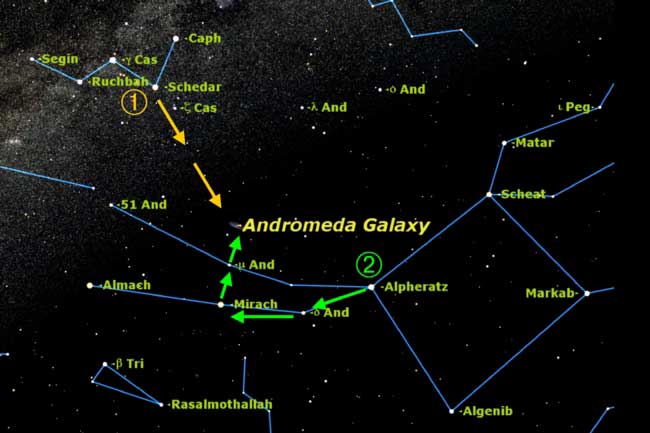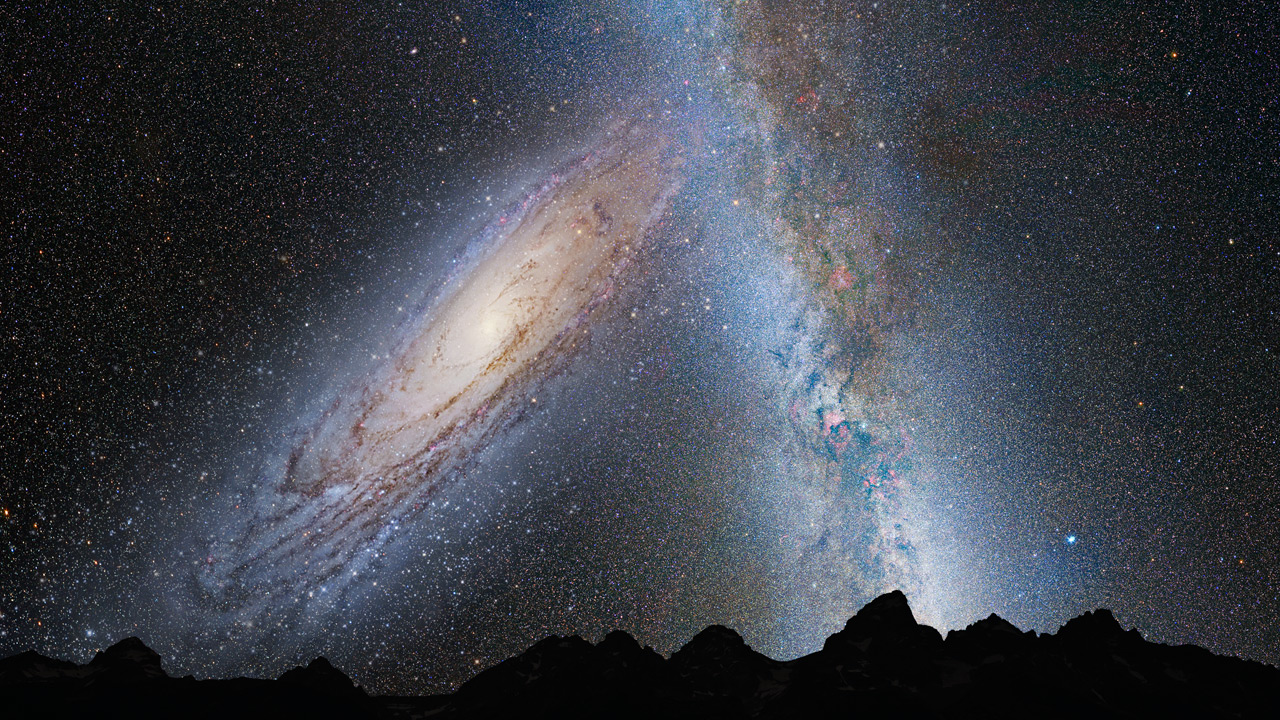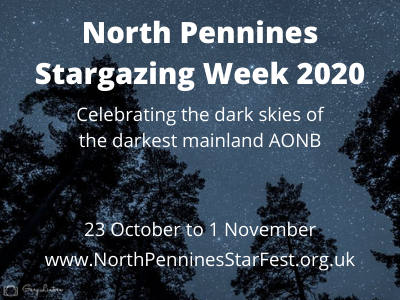North Pennines Stargazing Week
Exploring Andromeda
5 December 2024
Exploring Andromeda
by Andy Gray, Astronomer and Science Educator
The Andromeda Galaxy
Look up into the night sky, far from streetlights. Somewhere like the inky black skies of the North Pennines AONB and if you look in the right place, you might see a faint smudge of light. Andromeda is actually as big in the sky as the full moon but our eyes have evolved to see best in the daytime and cant detect it very well. Although its above the horizon for all of the year in the North Pennines, Autumn is the best time to see it as its almost overhead at 11pm.

(Image: © Starry Night Software)
That is the Andromeda Galaxy. It is another island universe like the Milky Way. It is the furthest object visible to the naked eye and is currently just over 2.5 million light years away. It is amazing to think the light reaching our eyes now, set out from Andromeda at the same time as humans on earth were just starting to develop and use tools.
Andromeda is a cluster of about a trillion stars (like the sun), about twice big and as many stars as our own Milky Way galaxy seen here from The Owens Valley in California last year.

One of the earliest written records of seeing Andromeda is from 964 by Persian Astronomer Abd al-Rahman al Sufi in his book describing the “Book of Fixed Stars” but it is very likely it was known about from prehistoric times.
Just after the invention of the telescope it was first observed by Simon Marius in the 1600’s. We are used to an amazingly fast pace of technological change but back then things did not develop fast. There were not many scientists and communication between them was poor compared to our world.
By the 1770’s there were more astronomers with telescopes surveying the night sky. One of them Charles Messier was looking for comets. He catalogued 110 other things which got in the way of his observations as he knew they were not comets. These Messier objects we now know, are things like nebulas, star clusters and supernova remnants and they provide a great list of things to see in the night sky when out observing. Andromeda appears in his list as M31 and it was thought to be a nebula or cloud of gas. In fact, at this time it was called the great Andromeda Nebula (nebula means a cloud of gas and dust in space.

It was not until about 100 years ago when astronomers using spectroscopy, realised that the light coming from Andromeda was remarkably like light coming from the sun and very different to light coming from nebulas. They concluded Andromeda must be made of stars.
From missions in our own solar system like Keppler, we know that its highly likely that each one of Andromeda’s trillion stars has planets in orbit around them and many of these could harbour life.
Recent measurements have shown that Andromeda is on a collision course with the Milky Way, approaching at 100km per sec. There is no need to worry however, as the collision will not happen until the sun has long since made life on Earth impossible.
This is an image of how the night sky might look in a few billion years.

It seems like galaxy devouring is common in the universe, there are lots of examples of this happening in the night sky like M51 the Whirlpool Galaxy.

It was not until the 1920s when Edwin Hubble used Cephid variables in the Andromeda galaxy to further confirm it was a different galaxy and quite how far away it is.
He used Cephid variables which are stars which have a very predictable change in brightness, like a lighthouse in space. The longer it takes for the brightness to come and go, the brighter the star is. They think the stars get bigger and smaller in a regular cycle which causes the brightness to vary.
The distance to close stars can be measured by parallax (their positions seem to move against the background stars if they are measured 6 months apart, so on either side of the sun. You can get the same effect if you look at a raised finger and close each eye in turn. If you change how far away your finger is, it seems to move against the background, the further away, the less it seems to move. If some of these closer stars are cephid variables and we measure how bright they seem, and how fast they pulse, Astronomers can work out how bright something should look at further distances from earth.
For example a bright close cephid might achieve peak brightness every 10 days. It would do that no matter how far away it was. Say its one light year away. If you found another star which had the same time period, but it was 100x dimmer, then its 10 light years away, the brightness gets less in a square relationship as it spreads out both across and up.
Although we do not know very much about the Andromeda Galaxy, its a great thing to see with the naked eye and amazing to see through a telescope. So get out to somewhere dark when it’s a clear night and get looking.

This blog is part of the North Pennines Stargazing Week 2020. Visit our Stargazing Week hub for more events, blogs and features.












